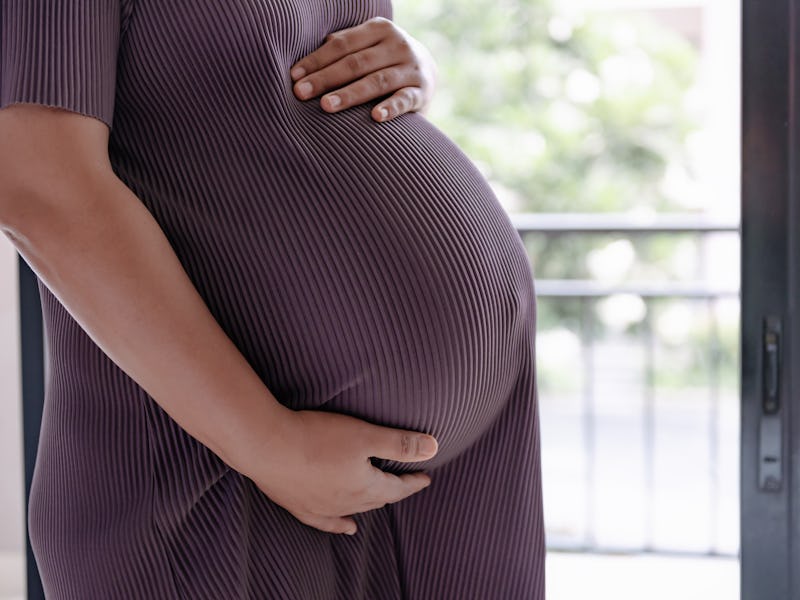Surrogacy Is Increasing in North America — Here’s What You Need to Know
New research suggests these pregnancies could be higher risk for women and babies.

A new study from Canada has found women who agree to carry and birth babies in surrogacy arrangements face a higher risk of complications than other pregnant women.
These women were at two to three times the risk of health problems such as postpartum haemorrhages and pre-eclampsia. They were also more likely to give birth prematurely.
With an increasing number of people in Australia and elsewhere having children via surrogacy arrangements, what can we make of these findings?
First, what is surrogacy?
Surrogacy is a situation where a woman becomes pregnant and gives birth to a baby (or babies) for another person or a couple in a planned arrangement.
There are two types of surrogacy.
The first is where the pregnant woman is the full biological mother, with the child conceived using her own egg (sometimes called “traditional” or “genetic” surrogacy).
The second is where the pregnant woman is not the genetic mother and the child is conceived using the egg of a different woman (called “gestational surrogacy”).
Gestational surrogacy involves the transfer of an embryo or embryos into the uterus of a woman who has agreed to carry and birth the child using in vitro fertilization (IVF). Gestational surrogacy is now the most common form of surrogacy arrangement in Australia.
The new study looked at gestational surrogacy specifically.
What the researchers did
The study, published in the journal Annals of Internal Medicine, was retrospective. This means it used existing data that is gathered routinely on people using health services.
It included 863,017 women who had a single baby between April 2012 and March 2021 (multiple births were excluded).
The researchers compared outcomes for women and babies where the pregnancy was achieved naturally, those who got pregnant using IVF, and those who were pregnant in a gestational surrogacy arrangement where the woman had no genetic link to the baby.
Most babies were conceived naturally, 16,087 were IVF pregnancies, and 806 women were pregnant in gestational surrogacy arrangements.
The researchers found pregnant women in gestational surrogacy arrangements had a rate of severe maternal complications of 7.8 percent, more than three times the rate of those who became pregnant naturally (2.3 percent) and almost twice the rate among those who got pregnant through IVF (4.3 percent).
These risks included postpartum hemorrhage (losing excessive amounts of blood following birth), severe pre-eclampsia (high blood pressure associated with pregnancy), and serious postpartum infection (sepsis). There was also a higher risk of the baby being born preterm (before 37 weeks) in gestational surrogacy situations.
The researchers attempted to take into account differences between the three groups like age, weight, health problems, and socioeconomic status, which can all influence the risk of complications for pregnant women and their babies. Despite this, they still saw these concerning results.
Why might the risk be higher?
Previous research looking at outcomes with gestational surrogacy has had mixed results. However, it is thought the reason risks could be greater for the woman and baby in gestational surrogacy arrangements may be because the baby is genetically unrelated to the woman.
Pregnancy has a strong impact on the immune system. During pregnancy, women’s immune systems are altered so they do not reject the growing baby.
An imbalanced or overactive immune response can contribute to pregnancy complications including preterm birth and pre-eclampsia. Having a baby with different genetic material may affect a woman’s immune response during pregnancy, and increase the risk of complications in this way.
Some limitations
Only women having a single baby were included in the study, so we don’t know the outcomes where a multiple pregnancy was involved. However, multiple births are common in surrogacy, and there are increased risks associated with multiple births for women and babies.
Multiple embryo transfer increases the risk of twins and triplets and is prohibited in the context of surrogacy in Australia (and discouraged in IVF treatments more broadly). However Australians engaging in overseas surrogacy commonly request it.
Also, the study includes a relatively small number of women pregnant in a gestational surrogacy arrangement (806), meaning there’s an increased risk for statistical error and limited ability to detect rare outcomes.
Ethical questions
An increasing number of Australians are having children via surrogacy arrangements. This is due to a combination of factors including a decline in adoption, women delaying motherhood, and increased social acceptability of male same-sex parenting.
Australia only allows altruistic surrogacy, where the woman who agrees to have the baby for others is not paid.
However, some other countries allow women to be paid to become pregnant for others (commercial surrogacy). Concern regarding the exploitation of women via commercial surrogacy is such that Queensland, New South Wales, and the Australian Capital Territory have made it illegal for residents to travel overseas to engage in commercial surrogacy.
Even so, most Australian children born as a result of surrogacy arrangements are born through overseas commercial surrogacy.
Despite some limitations, this research indicates increased risks for women becoming pregnant in gestational surrogacy arrangements and the babies they carry. It seems important the potentially elevated risks should be made clear to women considering carrying and birthing a baby for someone else, and to the prospective parents.
Considering the rise in surrogacy globally it’s important more research is undertaken on the potential health and other impacts of this practice on women and babies. Health, ethical, and human rights implications should inform legislative frameworks, policy, and practice.
This article was originally published on The Conversation by Hannah Dahlen and Karleen Gribble at Western Sydney University. Read the original article here.